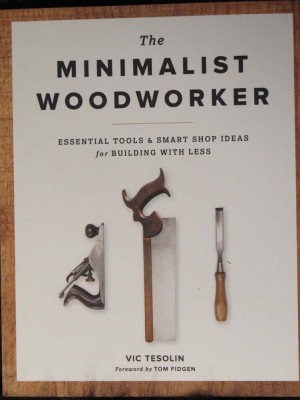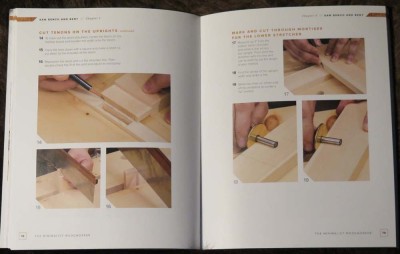The Chrestomathy Expands
Like most long-time woodworkers I am asked occasionally by an aspiring or nascent woodworker, or more often their friends and family, “What should I (they) study to get them going?”
Though each instance may have its own idiosyncrasies, in recent years my answer has been to steer the inquisitor towards three sources: Chris Schwarz’ “The Anarchist’s Tool Chest,” which gives an excellent foundational overview for the complete furniture making enterprise, “The Naked Woodworker” video by Mike Siemsen, providing an innovative seat-of-the-pants indoctrination to getting started cheaply, and one of the James Kernov Trilogy as sheer inspiration as it was the source for much of my own early exploration.

A recent addition to my library demands that I add a fourth citation to the chrestomathy for learning the language of woodworking: “The Minimalist Woodworker “ by Vic Tesolin. The subtitle and rear cover title say it all. “Essential tools & smart shop ideas for building with less,” and “Keep it simple. Build more with less.”

Tesolin’s writing is spare, concise, yet wonderfully descriptive. The photographic illustrations accomplish that which I know to be exceedingly difficult at times (and often poorly in craft technique books), it communicates exactly what the author is trying to convey and precisely what the reader needs to learn from it. In my opinion there is simply no way any earnest reader could peruse this book and not comprehend fully what the book means to teach.
I was hooked on the first page of the Introduction, containing some superb evangelism.
The truth about woodworking is that you don’t need a single machine or power tool to woodwork. There, I said it. What you do need is about 40 square feet of space for a workbench and some hand tools.
He follows this with a section “Woodworking vs. Wood Machining,” a dichotomy I have been contemplating for a long time.

After a review of spaces needed, a list of the minimalist’s tool kit, and a review of sharpening — a skill I increasingly contend is THE gateway skill for everything wood-craft related — Tesolin walks the reader through a series of simple projects that will not only outfit the shop with vital accouterments but will also outfit the reader with the skills to make almost anything furniture-wise. Making a saw bent (saw horse) and saw bench, making a shooting board/bench hook, making a wooden mallet, making a workbench, and finally building a small shelf for your tools.
No book is flawless, but The Minimalist Woodworker comes awfully close. Clearly Tesolin’s emphasis is on preparing the reader for a lifetime of skilled craftsmanship in the rectilinear world as there is little discussion, or tools for that matter, in developing a facility for creating curvilinear and serpentine forms. It’s all about the fundamentals of flat, true, and smooth. I believe that the mere inclusion of one tool and its use, the spokeshave, would have addressed this lacuna. Perhaps that will be in a subsequent title. Could there be a “Minimalist Furniture Maker” in the works? I certainly don’t know, but if there is put me down for several copies.
I made my first crude piece of furniture almost fifty years ago and have been earning a living in furniture restoration for more than forty, and “The Minimalist Woodworker” brought me nuggets to add to my treasure trove and motivated me all over again.
Kudos, Vic Tesolin. Kudos.


Join the Conversation!